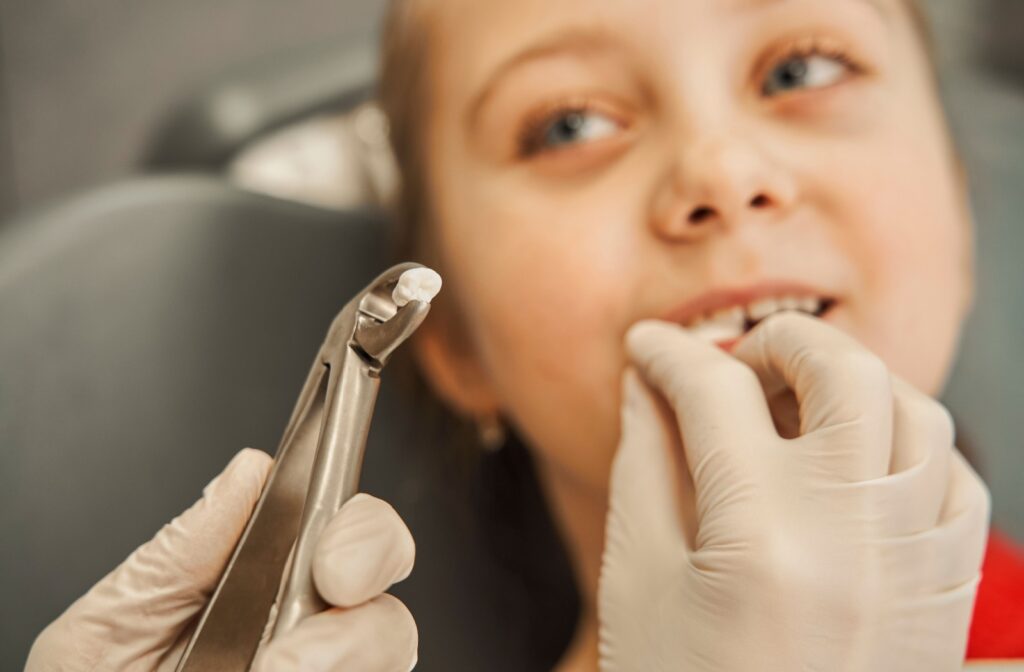Tooth extraction often feels like a significant event. Fortunately, with proper care, healing can be smooth and straightforward. One common question patients have is when to stop using gauze. The answer is that you can stop using gauze once bleeding has significantly decreased or stopped altogether.
Whether you’ve had your wisdom teeth removed or required an extraction for another reason, understanding what to expect can help alleviate post-surgery concerns and ensure a comfortable healing process.
Why Would You Need a Tooth Extraction?
Tooth extractions are more common than you might think. There are several reasons why your dentist might recommend one, including:
- Impacted Wisdom Teeth: Wisdom teeth that don’t have enough room to emerge can become trapped under your gums, causing pain and potential infections.
- Severe Decay: If a tooth is extensively decayed and beyond repair with a filling or crown, tooth extraction may be the safest option.
- Gum Disease: Advanced gum disease can loosen teeth to the point where extraction is necessary.
- Crowding: If your teeth are too close together, removal may be required before orthodontic treatment, such as braces.
Regardless of the reason, extractions are always performed to protect oral health and prevent further complications. Now, let’s discuss what happens after the procedure!
Tooth Extraction Healing Tips
Proper aftercare is key to a smooth recovery. We’ve broken down the process into manageable steps to make your post-extraction care as easy (and painless) as possible.
When to Stop Using Gauze
Right after your extraction, your dentist will place gauze over the site to help control bleeding and encourage clot formation. Bite down gently to hold the gauze in place firmly.
But how long should you keep it there? Here’s the low-down:
- Typically, you’ll need to keep the gauze in place for 30 to 45 minutes immediately after the procedure.
- If bleeding continues lightly, replace the gauze every hour or so until the bleeding slows down.
- Once the bleeding has significantly reduced, you can stop using the gauze. This typically takes about 3–4 hours post-surgery, but the duration varies from person to person.
Pro Tip: Avoid overexerting yourself or spitting too hard during this time—the clot needs to stay secure. If bleeding persists after several hours, contact your dentist.
Control the Swelling
Swelling is a normal reaction after an extraction, especially for procedures such as wisdom teeth removal. To reduce swelling:
- During the first 24 hours, apply an ice pack to your cheek for 15–20 minutes at a time.
- Elevate your head when resting by propping up a pillow to support it.
Swelling typically peaks within 48 hours and then subsides. If you experience increasing swelling after a few days, contact your dentist to rule out infection.
Manage Your Medications
Your dentist may have prescribed medication to help with pain or prevent infection. Be sure to:
- Follow the dosage instructions exactly as provided.
- If you were recommended over-the-counter medication, take it as directed. Ibuprofen is often helpful for managing both pain and swelling.
Remember, you might feel better quicker than expected, but that doesn’t mean you should discontinue medications without consulting your dentist.
Eat Soft Foods
You’ll want to stick to a soft food diet while your gums heal. Foods that are easy to chew and swallow will help avoid irritating the extraction site. Try some of the following:
- Smoothies
- Mashed potatoes
- Soup (as long as it’s not piping hot!)
- Scrambled eggs
- Yogurt
Avoid using straws, as the suction could dislodge the clot and lead to a painful condition called dry socket.
Rest & Relax
Your body needs rest to recover! Avoid strenuous activities such as exercise or heavy lifting for at least 24–48 hours after your extraction. Take this time to relax, binge-watch your favorite series, or catch up on some reading. Your gum tissue will thank you.
Practice Good Oral Hygiene
Maintaining oral hygiene is crucial after a tooth extraction, but you’ll need to approach it with care:
- Avoid brushing the extraction site for the first 24 hours.
- Starting the day after surgery, gently rinse the area with warm salt water (1/2 teaspoon of salt per cup of water) to keep it clean.
- Brush and floss the rest of your teeth as usual, but be extra careful around the surgical area.
When Can I Brush My Teeth After Having My Wisdom Teeth Extracted?

If you’ve undergone wisdom tooth removal, you’re probably wondering when it’s safe to pick up your toothbrush again. The general guideline is to:
- Avoid brushing for 24 hours after the procedure.
- After 24 hours, you can resume brushing, but avoid the surgical area for at least a few more days.
Rinsing with salt water can help maintain cleanliness until you feel confident brushing near the site again. Remember, patience is key! Overly aggressive brushing could disrupt your healing progress.
Moving Forward with Confidence
Tooth extractions might seem daunting, but with this knowledge, you’ll be well on your way to a smooth recovery. Marks Dentistry encourages patients to know when to discard the gauze and select the best post-surgery meals to aid their bodies in healing more quickly.Contact us today if you have any further questions on how to best prepare for a tooth extraction.




